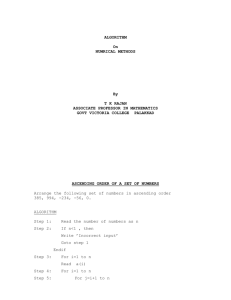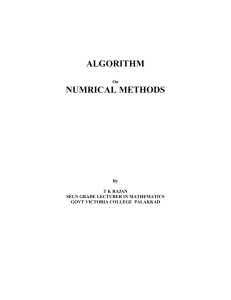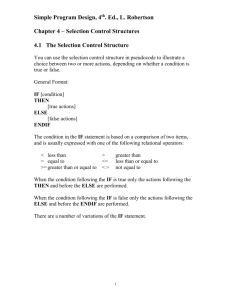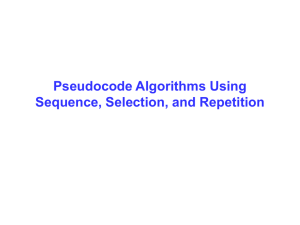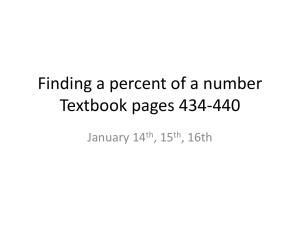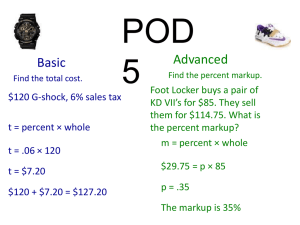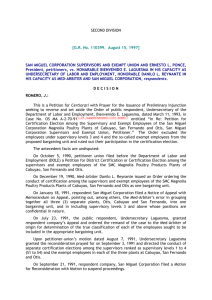Chapter 3 - pseudorandom bits
advertisement
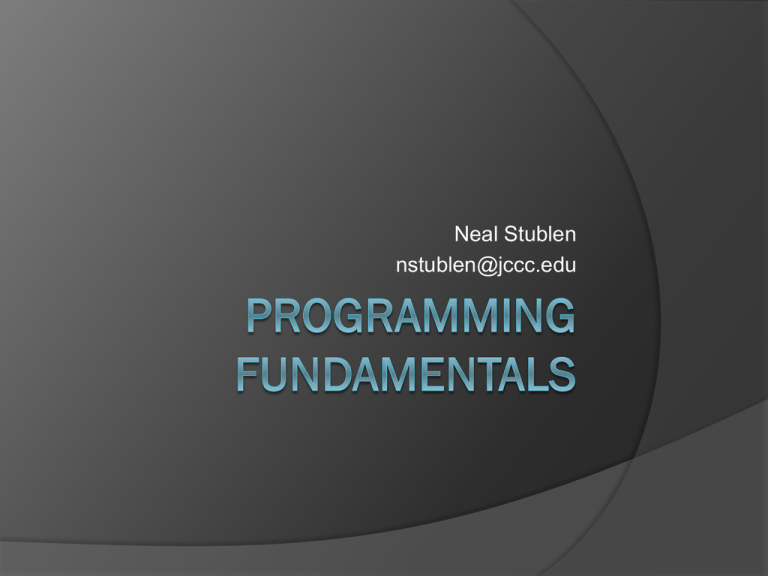
Neal Stublen nstublen@jccc.edu Human Decisions Think about a decision you've made today? How did you arrive at that decision? Was it a black-and-white decision for you? Our decisions can be complex? Computer "Decisions" Computer decisions always reduce down to simple logic comparisons Something is true or something is false It has a boolean value of true or false The decision block in a flow diagram requires a yes/no decision Is the light red? Is the light yellow? Is the light green? Boolean Decisions We use boolean expressions to determine a true or false condition We implement a selection structure Dual-alternative selection (if-then-else) Single-alternative selection (if-then) If-Then If the condition is true, then perform an action or a sequence of actions if condition then action endif if time is 6pm then begin class endif If-Then-Else If the condition is true, then perform an action or a sequence of actions Else perform a different action or sequence of actions if condition then action else another action endif if time is 6pm then begin class else wait endif Boolean Expressions An expression is just a statement the computer will evaluate 4+3 x/4 A boolean expression will be evaluated as either true or false Relational operators are used in boolean expressions Relational Operators Equivalence, = or == Greater than, > Less than, < Greater than or equal to, >= Less than or equal to, <= Not equal to, <> or != Also called comparison operators Relational Operators if customerAge >= 65 then discount = 0.10 else discount= 0.0 endif if customerAge <65 then discount = 0.0 else discount = 0.10 endif Negation Operator A negation operator reverses the logic of a true or false expression (NOT or !) if age >= 21 then allow purchase endif if NOT age >= 21 then refuse purchase endif Example What logic can we use to implement the following discount table: Purchase Discount $0.00 to $25.00 5% $25.01 to $50.00 10% $50.01 to $100.00 15% Over $100.00 20% Implementing Minimal Conditions Selecting from a group of ranges, the last check is never necessary If the table is complete, we rule out one possibility with each check If total is not > 100 and total is not > 50 and total is not > 25, then total must be <= 25. Compound Conditions Sometimes we need more complex logic to make a decision if I’m speeding then if I see a police car then slow down immediately endif endif Nested Decisions if condition1 then if condition2 then take action endif endif if condition1 AND condition2 then take action endif AND Operator if x AND y then do something endif “x AND y” is a boolean expression that can be evaluated as true or false x y x AND y True True True True False False False True False False False False Short-Circuit Evaluation if x AND y then do something endif If we know x is false, we know x AND y is also false. There’s no need to evaluate y. Short-Circuit Example if age > 12 AND age < 65 then movieDiscount = 0.0 endif If age is less than or equal to twelve, the computer will not need to determine if age is greater than 65. Example How would we implement the following discount table: Purchase Discount $0.00 to $25.00 5% $25.01 to $50.00 10% $50.01 to $100.00 15% Over $100.00 20% On Sundays, senior citizens receive an additional 5% discount. OR Operator if x OR y then do something endif “x OR y” is a boolean expression that can be evaluated as true or false x y x OR y True True True True False True False True True False False False Short-Circuit Evaluation? if x OR y then do something endif Is there a short-circuit evaluation for the OR operator? If we know x is true, we know x OR y is also true. There’s no need to evaluate y. OR Efficiency if age < 12 then movieDiscount = 0.10 endif if age > 65 then movieDiscount = 0.10 endif if age < 12 OR age > 65 then movieDiscount = 0.10 endif AND/OR Precedence AND operator is always evaluated before the OR operator c1 OR c2 AND c3 OR c4 c1 OR (c2 AND c3) OR c4 Precedence Example if age <=12 OR age >= 65 AND not Friday then discount = 0.10 endif A twelve year old still gets the discount on Friday. if (age <=12 OR age >= 65) AND not Friday then discount = 0.10 endif Parentheses always clarify intention. Summary Boolean expressions Relational operators AND Logic OR Logic Selection within ranges AND/OR precedence Date Validation What logic would we need to validate a user’s date input? The user enters separate values for the month, day, and year.

![procedure SumOfSubsets(A[0:n * 1],Sum,X[0:n])](http://s3.studylib.net/store/data/007635889_2-3e56f5cfefbd576d3b1ed785ac704b8b-300x300.png)
